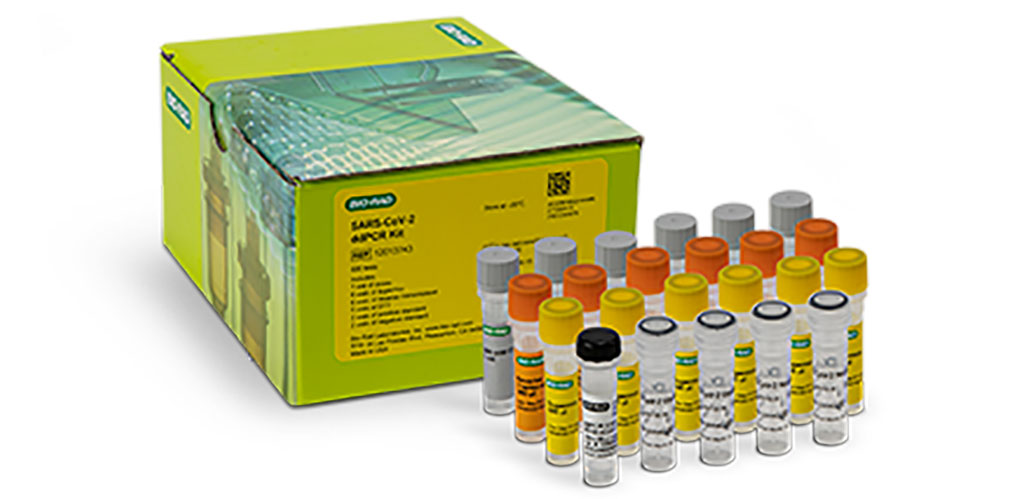SARS-Cov-2 RNA Detected in FFPE Tissue by Droplet Digital PCR
Posted on 22 Jun 2022
SARS-CoV-2 infection can result in diverse, multiorgan pathology, the most significant being in the lungs, heart, kidney, central nervous system, liver, lymph nodes, bone marrow, vasculature, intestine, and placenta.
SARS-CoV-2 infection is usually identified by the detection of viral RNA using reverse transcriptase polymerase chain reaction (RT-qPCR) on nasopharyngeal or oropharyngeal swabs. Patients with current or previous SARS-CoV-2 infection who present with “unexplained” acute or acute on chronic respiratory failure or other organ-specific manifestations may undergo tissue biopsy.

A team of diagnosticians from the Mayo Clinic (Rochester, MN, USA) developed and validated using droplet digital PCR (ddPCR a qualitative test for detection of SARS-CoV-2 in formalin-fixed paraffin-embedded (FFPE) tissues. Thirty-seven tissue samples from 35 autopsy cases (20 positive, 15 negative), a cell block from a cell line infected with SARS-CoV-2, and a cell block from a cell line infected with influenza virus were utilized in a study for accuracy, precision, stability, linearity, and specificity studies.
Total RNA, including viral RNA, was extracted from unstained FFPE tissue scrolls cut at 10 µm by either RNeasy DSP FFPE Kit or miRNeasy FFPE Kit (Qiagen, Hilden, Germany). The RNA was quantified, ranging from 12 to 800 ng/μL, and stored at −80 °C. The assay was performed using the Bio-Rad SARS-CoV-2 ddPCR Test (Bio-Rad Laboratories, Hercules, CA, USA). RNA samples were run both neat and at a 1:100 dilution. After the reaction was partitioned into droplets using the Bio-Rad AutoDG instrument, SARS-CoV-2 nucleocapsid (N1 and N2) target sequences, along with human ribonuclease P/MRP subunit 30 (RPP30) target as a control, were amplified using the Applied Biosystems’ Veriti thermocyclers (Thermo Fisher Scientific, Inc., Waltham, MA, USA).
The scientists reported that SARS-CoV-2 was detected in all 21 known positive samples and none of the 16 negative samples. As few as approximately five viral copies were reliably detected. Since January 2021, many tissue types have been clinically tested. Of the 195 clinical specimens, the positivity rate was 35% with placenta and fetal tissue showing the highest percentage of positive cases. Both intra- and inter-assay measurements were 100% concordant in qualitative positive or negative calls among all replicates for each sample. No amplification of either of the nucleocapsid targets was detected (i.e., 0 droplet count for both N1 and N2) for any of the non-SARS-CoV-2 viruses tested.
The authors concluded that that ddPCR provides both accuracy and sensitivity in detecting patients with low viral load. SARS-CoV-2 ddPCR testing will also aid in understanding atypical presentations of COVID-19, including in patients who present with “unexplained” symptoms or potential long-term sequelae. The study was published on June 15, 2022 in the journal Clinica Chimica Acta.
Related Links:
Mayo Clinic
Bio-Rad Laboratories
Thermo Fisher Scientific
Qiagen













